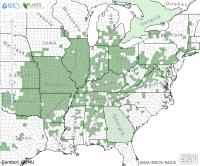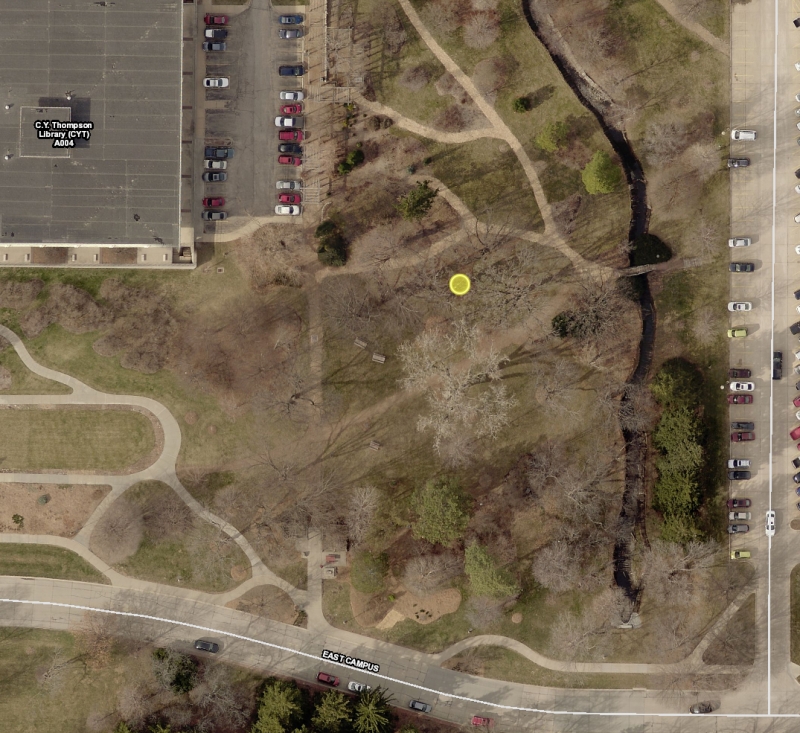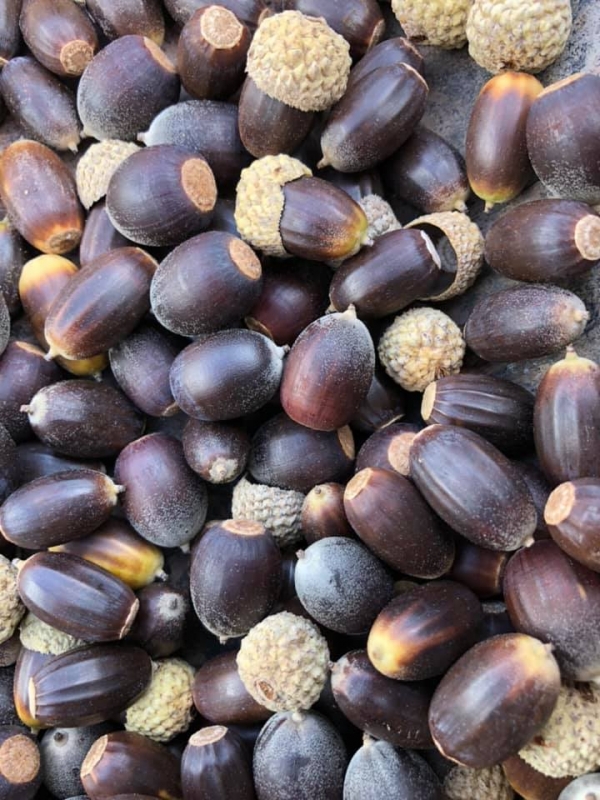
About Oaks (home) | Map | Plant List | Cultivar/Species Information | Sources | Other Campus Oaks of Interest
Latin Name: Quercus muehlenbergii
Common Name: Chinquapin Oak, Chinkapin Oak

Cultivar:
Family: Fagaceae
Division: White
Native Range: New England to Virginia, west to Kansas and Oklahoma. In Nebraska: along the Missouri River from Cass County south, and in the lower Nemaha drainage.
Introduced: 1822
Sun/Shade: sun
Height: 40'-60' × 30'-50'
Form: rounded in youth, broadly open with age
Zones: 4-7
Flower: Catkin.
Leaves: 4"-6½" long, 1/3 -1/2 as wide, coarsely toothed, 8-13 pairs; lustrous green above, whitish tomentose below.
Fall Color: yellow to orange-brown to brown
Fruit: Acorns, ovoid ¾-1", a thin cap covers about half.
Buds: light brown, ovoid; 1/6"-1/4"
Bark: rough and flakey, brown-gray
Wildlife: Larval host plant for many butterflies, moths, and skippers; acorns are food for birds both large and small, and mammals from black bears to mice. Deer browse on twigs and foliage of young trees. Older trees provide nesting and den opportunities for for cavity-nesting birds and tree-dwelling mammals.
For detailed information about insect associations see Illinois Wildflower's Quercus muehlenbergii page.
Disease issues:
Cultural Uses: Use by the Delaware Indians: infusion of bark as an antiemitic (Tantaquidgeon, Gladys, 1942, A Study of Delaware Indian Medicine Practice and Folk Beliefs, Harrisburg. Pennsylvania Historical Commission, pp. 68, 82. Dr. Tantaquidgeon was a medicine woman of the Mohegan people.).
Folklore:
Notes:
Where to find Quercus muehlenbergii in Maxwell Arboretum:
←Previous Oak → NEXT OAK
All images from Maxwell Arboretum unless noted.
Foliage
Nebraska Statewide Arboretum
Acorns
Nebraska Statewide Arboretum
Bark
Nebraska Statewide Arboretum